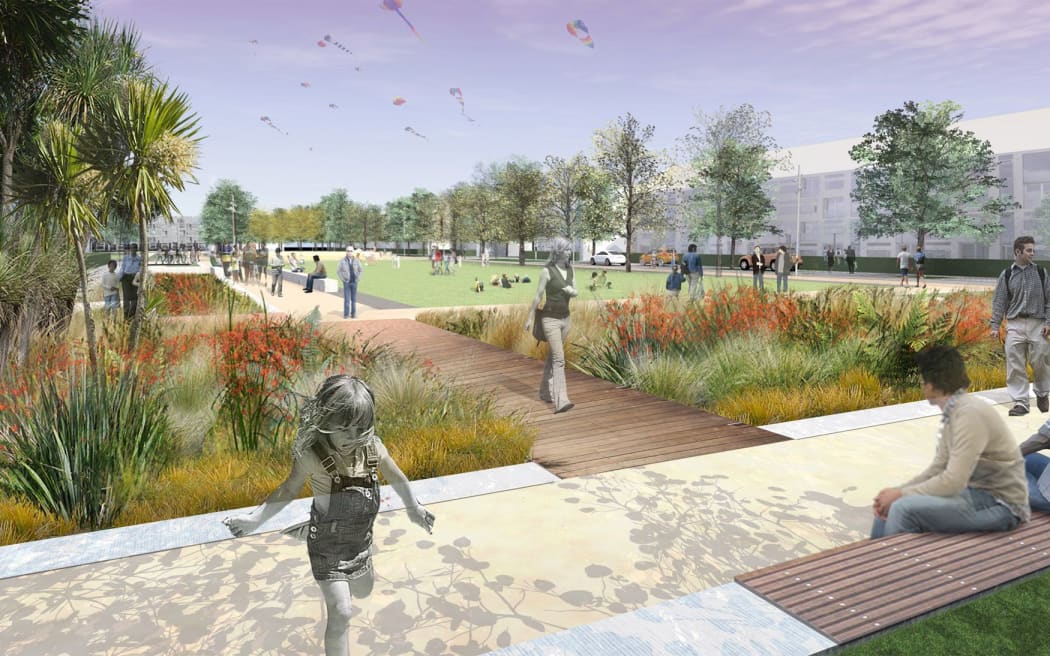International crime experts say the importance of urban design and public spaces must not be underestimated in the rebuild of Christchurch.

The Canterbury Earthquake Recovery Authority's artist impression of the east frame residential project. The project uses Crime Prevention Through Environmental Design principles. Photo: SUPPLIED
An annual global crime fighting symposium took place in Christchurch this week, and crime scientists from the US and the UK said the world would be watching how design and crime prevention methods were used in the city's recovery.
Gloria Laycock, a founding director of the Jill Dando Institute at University College London, said the opportunity to basically rebuild a city start from scratch was unique.
"Christchurch has got the most amazing opportunity to really design the new city in a way that can design out a lot of the problems and design in opportunities for social exchange with young people," she said.
"And if you can do that then Christchurch will just be the most amazing city."
Professor Laycock said Christchurch's rebuild, and whether crime rates would be reduced as a result of good design, would attract attention globally.
An approach called Crime Prevention Through Environmental Design, or CPTED, is being used by the city council and the Canterbury Earthquake Recovery Authority in all of the city's publicly-funded rebuild projects.
The council's Crime Prevention Team Leader Sue Ramsay said the first completed project to use CPTED was the city's new bus interchange, which opened last month.
She said the public toilets had been designed to reduce antisocial behaviour.
"Most transport hubs have issues around safety," she said.
The toilets had a glass entry door into the foyer so people could see who was in there and "know it's safe to enter".
"Anybody who's in there, their behaviour will be very conspicuous if they're doing something that isn't wanted."
She said the city centre was relatively crime-free since the quakes because of the lack of people and activity, but that would change.
Recovery agencies had to make sure good advice was followed and CPTED was applied throughout the city's recovery.
From a policing point of view, John Eck from the University of Cincinatti, said it was best to focus on what he calls place managers, from individual homeowners to the publican of a bar that regularly attracts crime.
"If you focus on large areas you're going to bring into, whatever you're doing, a lot of people and institutions that are not contributing to crime and you will spread your resources too thin," he said.
The Canterbury Earthquake Recovery Authority has used CPTED in its design of a central city residential development to help deter crime from an area that previously attracted it.
The design for the east frame project has taken lighting, the height of trees and bushes and the width of public spaces into account.



